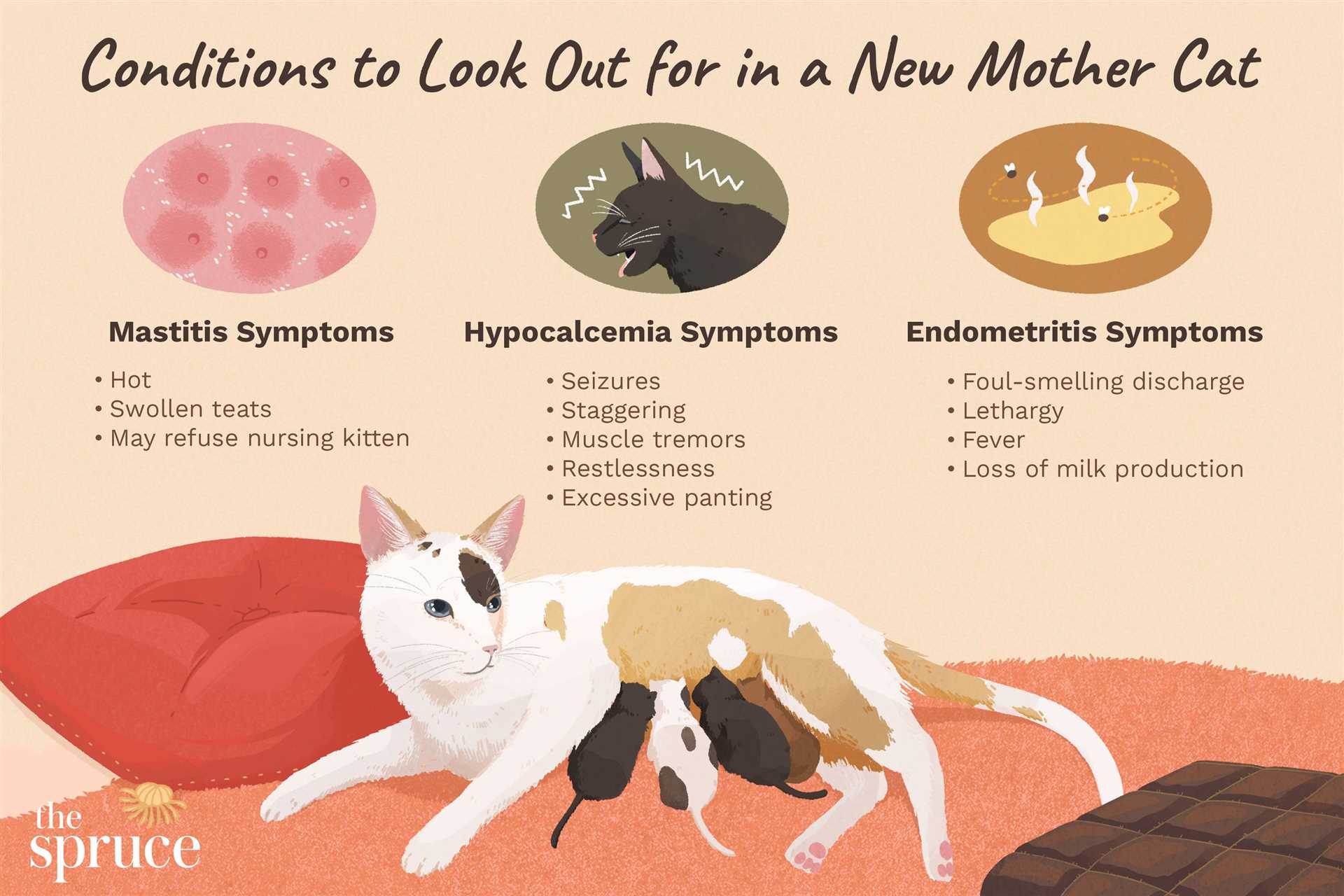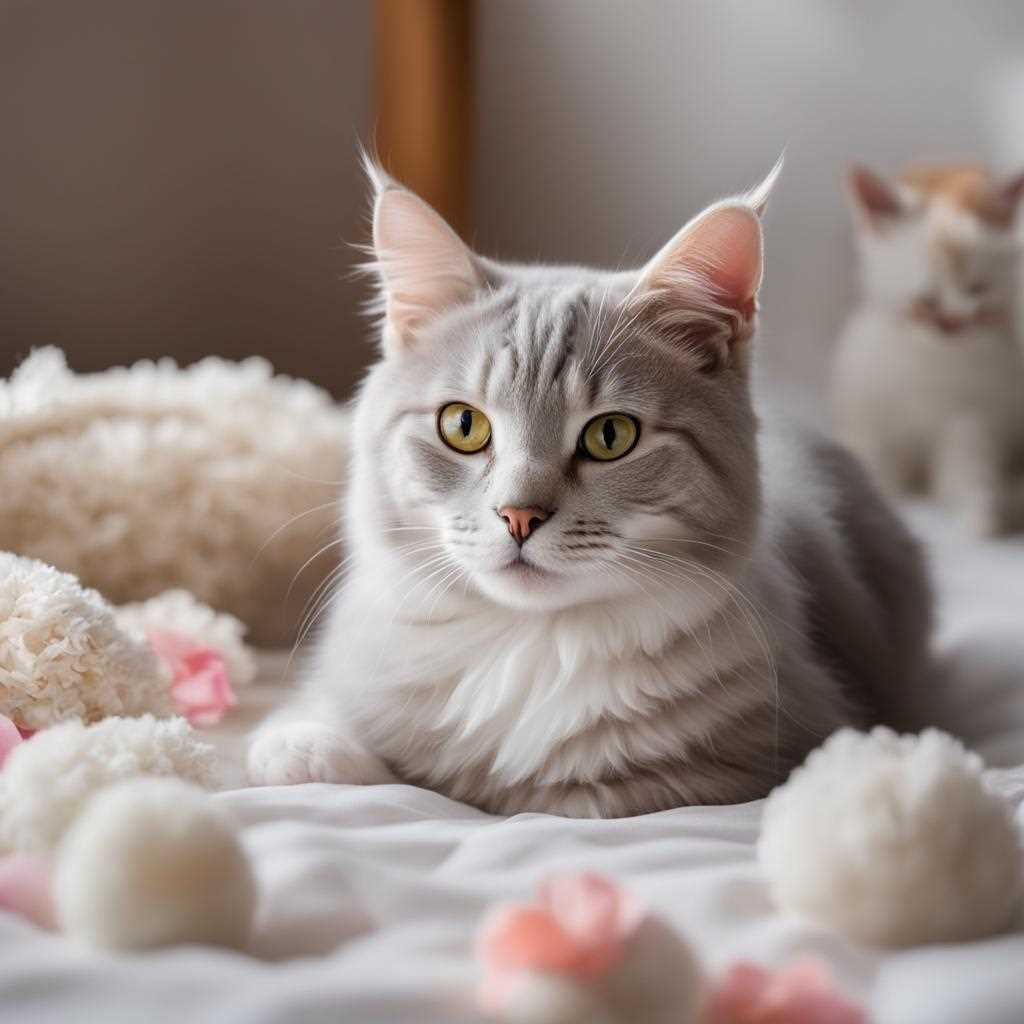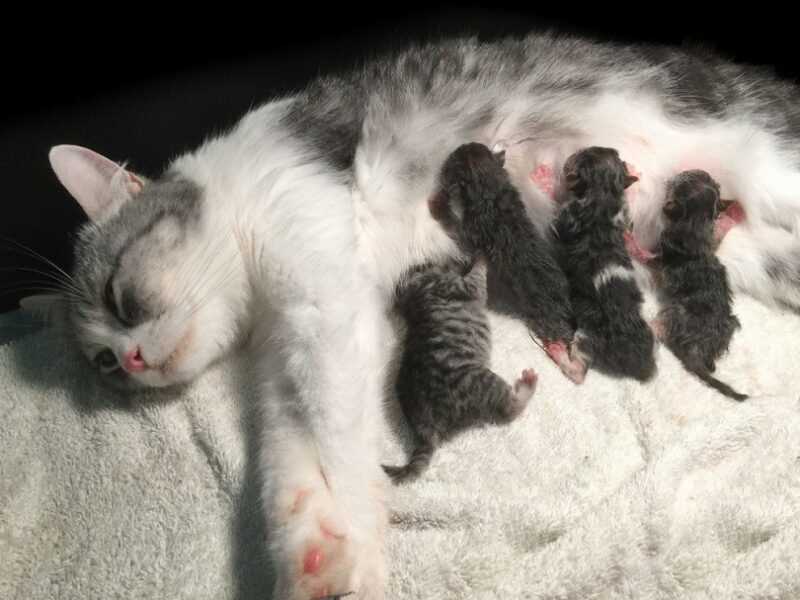



It’s recommended to refresh the sleeping area within 24 to 48 hours following the arrival of the little furballs. This period ensures a clean and safe environment for both the mother and her newborns.
During the first week, the frequency of replacing the linens should be increased to every other day. This helps to eliminate any lingering odors and bacteria that may affect the health of the kittens and their mom.
Once the kittens are a week old, transitioning to a weekly schedule for refreshing the space can be adopted. Observing any signs of discomfort or mess can prompt more frequent updates to maintain hygiene and comfort.
Timing for Bedding Refresh Post-Kittens

It’s best to refresh the sleeping area every couple of days during the first week. This helps maintain a clean environment for both the mother and her little ones. Pay attention to any signs of odor or soiling, as these indicate the need for a quicker refresh.
In the second week, a weekly clean should suffice, unless there are visible messes. During this period, the kittens start becoming more mobile, which can lead to increased mess. Monitor the area closely.
After two weeks, adjust the frequency based on the activity level of the kittens and the cleanliness of the space. Regular checks will help you determine the optimal schedule for maintenance.
Always use materials that provide comfort and warmth, ensuring the mother and her young ones feel secure and cozy. Avoid harsh chemicals when cleaning; opt for pet-safe products or natural solutions to keep the area safe.
Be observant of the mother’s behavior. If she seems restless or uncomfortable, it might be time for a refresh, regardless of your schedule. Her well-being is just as important as keeping the space clean.
Signs That Indicate It’s Time to Change Bedding
Observe for any unusual odors. A strong or unpleasant smell often indicates that the material has absorbed too much moisture or waste, signaling the need for a refresh.
Check for visible stains. Any discoloration or spots from fluids or waste means it’s time to swap out the material to maintain a clean environment.
Monitor the behavior of the new arrivals. If they seem restless or avoid spending time in their sleeping area, it might be a sign that the current setup is no longer suitable.
Health Concerns
Watch for signs of irritation on the skin or fur of the little ones. If you notice any redness or excessive scratching, the sleeping area could be contributing to these issues.
Pay attention to any changes in behavior from the mother. If she appears stressed or uncomfortable, it might be due to an unclean resting place, prompting the need for immediate action.
Environmental Factors
Consider the temperature and humidity levels. If the area feels damp or excessively warm, the bedding can retain moisture, necessitating a change. For more insights on protein-related topics, check out where does protein production begin.
Regularly assessing these indicators helps ensure a safe and comfortable space for both the mother and her young.
Frequency of Bedding Changes During the First Week
During the initial week of caring for newborns, it’s crucial to maintain a clean environment. I recommend replacing the substrate at least twice daily. This helps manage odors and reduces the risk of infections for both the mother and her kittens.
Daily Routine
- Morning: Remove soiled material and replace it with fresh items.
- Afternoon: Check for any signs of mess and refresh the area as needed.
- Evening: Conduct a final inspection and replace any dirty spots.
Monitoring the comfort level of the mother is essential. If she seems restless or agitated, it may indicate the need for more frequent replacements.
Signs of Required Attention
- Strong odors or visible stains.
- Increased activity or discomfort from the mother.
- Unusual behavior from the kittens, such as crying more than usual.
Keeping a consistent schedule is beneficial, but adjusting based on the specific needs of the situation is just as important. Regular checks will ensure a safe and healthy space for the family.
Choosing the Right Bedding Material for Newborn Kittens
For a cozy and safe environment for little ones, opt for soft, absorbent materials. Here are some recommendations:
- Fleece: This material is gentle on tiny paws and provides warmth. It’s also easy to clean and dries quickly.
- Old Towels: Soft and easily washable, towels offer good absorption and can be layered for extra comfort.
- Newspaper: A cost-effective option that can be changed frequently. However, add a softer layer on top for better comfort.
- Pet Pads: Designed for absorbency, these pads protect surfaces and keep the area dry. Choose those that are free from harmful chemicals.
Considerations for Temperature Regulation
Keeping the nursery warm is crucial for young kittens. Select insulating materials that retain heat but allow for airflow. Avoid overly thick options that may trap moisture and heat.
Cleaning and Maintenance
Regardless of your choice, ensure materials are machine washable. Regular cleaning is vital to maintain hygiene, so select fabrics that withstand frequent washes without losing their softness.
How to Safely Clean and Disinfect Bedding

Begin with removing any soiled materials and ensuring that the area is free from debris. Use gloves to protect your paws and avoid direct contact with any mess. Next, prepare a solution of warm water mixed with a mild detergent suitable for pet environments. Gently agitate the mixture to create suds.
Washing Procedure
Submerge the soiled fabrics in the solution, allowing them to soak for at least 15 minutes. This helps to loosen stubborn stains and odors. After soaking, scrub the fabric gently with a soft brush or cloth to remove any remaining dirt. Rinse thoroughly with clean water to ensure all soap residue is eliminated.
Disinfection Steps
After washing, it’s crucial to disinfect. Use a pet-safe disinfectant spray or a diluted vinegar solution, spraying evenly across the surface. Allow it to sit for the recommended time specified on the product label. Rinse again if necessary, ensuring no harmful chemicals remain. Finally, air-dry the items completely in a well-ventilated area, as moisture can lead to mold growth.
Monitoring Mother Cat’s Behavior and Health
Observe her appetite closely. A decrease in food intake or refusal to eat may signal health issues. Ensure she consumes enough nutrients to support herself and her kittens.
Watch for signs of lethargy. If she seems unusually tired or uninterested in her surroundings, it could indicate a problem. Regularly check her energy levels to ensure they remain stable.
Pay attention to her grooming habits. A mother should keep herself clean, especially in the days following delivery. If you notice she is neglecting her grooming, it may be time to consult a veterinarian.
Monitor her behavior towards her kittens. If she shows signs of aggression or disinterest in caring for them, this could indicate stress or health concerns. A healthy mother is typically attentive and protective.
Keep an eye on her litter box usage. Constipation or diarrhea can be red flags. Ensure she has easy access to a clean litter box.
Consider using a glucometer for cats to monitor her blood sugar levels, especially if she has a history of diabetes. This can help catch potential issues early.
Finally, maintain regular veterinary check-ups. Routine examinations can catch health problems before they escalate, ensuring she remains in optimal condition while caring for her new arrivals.
Best Practices for Maintaining a Clean Environment for Kittens
Regular sanitation is key to ensuring a safe space for new arrivals. I recommend daily checks for any mess, especially during the first few weeks of their lives. Remove soiled materials immediately to prevent odors and health risks.
Sanitization Schedule

Implement a simple cleaning routine. Use a two-step process: first, remove any contaminated items; second, disinfect the area with pet-safe products. A thorough cleaning every 2-3 days is advisable, while spot-cleaning can happen more frequently.
| Cleaning Task | Frequency |
|---|---|
| Remove soiled materials | Daily |
| Thorough cleaning of the area | Every 2-3 days |
| Deep disinfecting | Weekly |
Monitoring and Adjusting Conditions
Keep an eye on the little ones’ behavior. If they seem restless or avoid the designated area, it might indicate a need for a refresh. Also, observe the mother; her comfort directly influences the kittens’ well-being. Adjust the environment based on her cues to maintain harmony.
FAQ:
How soon should I change the bedding after my cat gives birth?
It’s recommended to change the bedding within the first few days after your cat has given birth. Keeping the area clean is important for both the mother and her kittens. You should regularly check the bedding for any signs of dirt or soiling, and replace it as needed to maintain a hygienic environment.
What type of bedding is best for a mother cat after giving birth?
A soft and absorbent bedding material is ideal for a mother cat and her kittens. Options like fleece, cotton blankets, or specialized pet bedding are good choices. These materials provide warmth and comfort while being easy to clean. Avoid using materials that could irritate the mother or kittens’ skin.
How can I tell if the bedding needs to be changed?
Look for signs of soiling, such as stains or unpleasant odors, which indicate that it’s time to change the bedding. Additionally, if the mother cat seems restless or uncomfortable, it may be a sign that the bedding is not clean enough. Regularly observing the area will help you determine when a change is necessary.
Should I use any specific cleaning products when changing the bedding?
When changing the bedding, it’s best to use mild, unscented detergents to avoid any potential irritation to the cat and her kittens. Avoid harsh chemicals or strong fragrances, as these can be harmful. After washing the bedding, ensure it is thoroughly dried before placing it back in the area to provide a comfortable environment for the new family.











